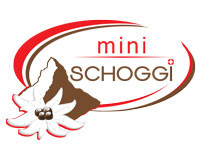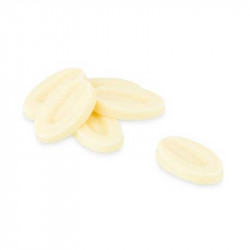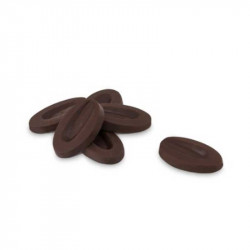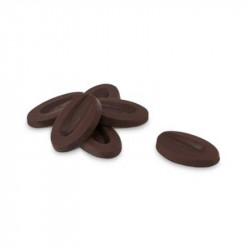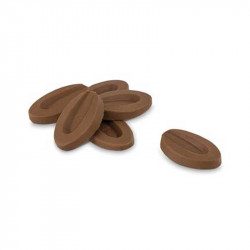List of products by brand Valrhona
If you are looking for delicious and high-quality couverture from the best conditions, Valrhona is the place to go. In addition to the highest quality, environmental protection, sustainability and fair trade are top priorities here.
Fairtrade and sustainability certification are big issues in the cocoa industry today. When talking about the leading chocolate producers in terms of quality, innovation, sustainability and fairness, it is important not to forget Valrhona. With extensive efforts, various projects and cooperation with customers, researchers, patissiers, various organisations and the producers on the cocoa plantations, Valrhona ensures a better and more sustainable trade. The company has been certified as a B Corporation and thus meets the strictest requirements regarding sustainability, environmental protection and living and working conditions of the producers.
Commitment to pleasure and quality
In close cooperation with some of the best patissiers in the world, new delicious couvertures and chocolates are constantly being developed. With all couvertures of this brand, you can rely on the best quality and excellent taste, plus the drops are easy to process.
In order to obtain further flavours, experiments are also carried out with new cocoa beans. In various areas, the existing varieties are analysed, cultivated and the harvested beans are processed into chocolate. These are tasted and evaluated so that particularly fine varieties can be further disseminated and used. Finding interesting trees in huge forests is not so easy, however. Thus, in one such project, the idea was born to ask the students of a local agricultural school to bring a cocoa pod from the family's own plantation or a nearby forest. In this way, a total of 17 varieties became distinguishable. With the finished chocolates, it was then possible to assess which cacao trees should be cultivated further and to which combination of ingredients they might go particularly well.
In Peru, one particular variety of cacao is already being protected and further propagated, as it had previously been slowly disappearing. The Gran Blanco cocoa has a wonderful aroma and can now be found on three of the Cooperativa Norandino plantations working with Valrhona. An exclusive purchase right to this variety has been agreed.
There is also a lot of experimentation with cultivation methods. In some countries, there are several plantations, each of which is cultivated in a slightly different way, for example with a different organic fertiliser or a different interplanting. After some time, it is then possible to determine how the quality and quantity of cocoa beans differ and the method with the best result can be implemented on other plots.
Valrhona started early to combine cocoa beans in different ways, so they created the most bitter chocolate in the world from different Grand Cru couvertures. Another extraordinary creation came about more by chance. During a demonstration, the then head of the company Frédéric Bau left his white couverture in the water bath for too long. It began to discolour and tasted different from before. After 8 years of tinkering, Dulcey was launched, a white couverture with a caramel colour and a wonderful aroma reminiscent of shortbread and caramelised milk.
To bring in fruity flavours more strongly, Valrhona invented double fermentation. Fruits are included in a second fermentation process. In this way, their flavour enters the chocolate in a natural way. the first fruit chocolate was then released in 2016; its aroma is particularly pronounced, but its colour and taste are completely natural, and no artificial additives are used at all.
Commitment to producers and education
Valrhona is committed to a better future on all fronts. An important part of this is working closely with the producers. To this end, they have direct relationships with the families, private groups or cooperatives on the ground where the cocoa and sometimes fruit or nuts are produced. These business relationships are long-lasting and based on mutual respect and cooperation. Some of the over suppliers have been working with Valrhona for over 35 years, others are still very new and are actively supported in their development. In total, over 17000 cocoa farmers supply their fine beans to Valrhona.
Cocoa is often produced in countries where many families live in poor conditions and often do not have good access to health facilities or education. These circumstances need to be improved and this can only be done with constant efforts for new infrastructure, an active involvement of the local population and a fair wage for the cocoa.
The price of cocoa fluctuates greatly on the world market and cocoa farmers often receive less money than they need for their daily lives. Valrhona, on the other hand, has agreed on a minimum price with each producer and sometimes also fixed prices. This way, the cocoa farmers and their families receive a fair and secure wage for their work. In addition, there is further training and technical equipment. Training courses are organised for the producers again and again. In this way, they acquire new skills and learn how to cultivate their land more carefully and with higher yields. Not only is the harvest larger and of higher quality, but the environment is also protected by raising awareness about deforestation, pesticides and unsuitable planting.
Another major problem in the chocolate industry is unfortunately still child labour. Valrhona actively fights this and at the same time promotes the education and well-being of the children. Schools and training centres are built in cooperation with other local organisations. For example, a new primary school was built in Côte d'Ivoire. Less than a year later, a canteen was added to provide the children with a healthy lunch. The food, which comes from the region, is cooked by some local women. This not only creates jobs, but the children also benefit in several ways.
Some of the families live far away, so the children would have to travel a long way to eat at home at lunchtime. Some distances are so long that the children can no longer get to school in the afternoon. Also, the food at home is not always good or the children even go to their parents on the plantation over lunch to help with the work there. So by building and running the canteen, child labour has been reduced, children's nutrition has improved and attendance in the afternoon has increased from half to 90% of pupils!
In some places, the homes of the workers themselves are also insufficient for a good, safe life. Therefore, an entire village in Madagascar was renovated with the support of Valrhona. More than 50 houses were built, as well as a basic health centre and sanitary facilities. In other countries, too, houses have been and will be built and renovated, always adapted to the circumstances. Some of the houses are now storm-proof and have running water and electricity.
However, the promotion of education is not limited to the cocoa-producing countries. By participating in the extraordinary project "Graines de Pâtissier", disadvantaged young people are also supported. They are given the opportunity to get a taste of the work of chocolate makers, bakers and confectioners, and those who are interested are offered professional training in the relevant field.
Commitment to the environment
Plantations are often harmful to the environment, as monocultures and the use of pesticides are widespread and forests are also cleared for more land. But here, too, something can be done to counteract the negative effects. Valrhona builds educational centres and organises further training for the cocoa producers, where they learn how to plant the land in a way that is gentle, productive and ecological.
In Ghana and Côte d'Ivoire, there is a great project to fight deforestation, to renovate destroyed areas and former, overgrown plantations and to set up a control system. Valrhona also participates in the Cocoa and Forests Initiative. Traceability is a particularly important issue. The fields of the plantations are precisely measured and mapped, which then makes it possible to set up an origin system. The cocoa beans delivered to Valrhona can then be assigned to the exact parcel of land where they were grown. This system is invaluable for quality control and prevention of deforestation. It is effective in preventing the poaching of cocoa fruit from protected areas and the spread to forested areas. Currently, depending on the area, 100% of the cocoa can be traced from Valrhona to the plot where it was grown.
The Sambirano Valley is located in Madagascar, offers an incredible diversity of special plants and animals and is the main cocoa growing area on the island. Unfortunately, the biodiversity of this valley is threatened, and increasing deforestation is also a massive problem here. Together with the NGOs Helvetas and Earthworm, as well as Lindt and Société Millot, Valrhona is fighting to preserve this beautiful area. Société Millot is a society of cocoa farmers in Madagascar. The two companies have been working together for over 30 years, and in the meantime Valrhona has even become a shareholder of Millot and has an exclusive right to buy all the cocoa produced, which is of organic quality.
Other producers at Valrhona also meet these strict guidelines. The certifications they can show always depend on the stage of development of the production and the managing organisation. Some producers are just learning how to grow organically, others are more advanced in the process. Ultimately, however, they are all working towards the same goal and Valrhona supports these efforts, adapted to the existing development and the demands, wishes and needs of the cocoa farmers.
Valrhona's commitment to the environment is by no means limited to the cocoa plantations themselves. Its larger facilities include four schools in Tain l'Hermitage, Paris, Tokyo and Brooklyn, two factories and the "Cité du chocolat" visitor centre, which are also located in Tain l'Hermitage. These naturally have a high energy and material consumption. For these reasons, Valrhona has set itself ambitious goals and carried out detailed analyses. These include, for example, openly accessible emission figures and detailed energy measurement at the largest sites.
Most emissions are caused by the sourcing of cocoa beans, which is where Valrhona starts its efforts on the ground. The factories have high water and energy consumption, which have also already been reduced. In the production of chocolate, cooling is enormously important but also a huge energy consumption. By centralising and installing a new cooling system, Valrhona has been able to reduce the energy consumption of the factories by a quarter! They also rely primarily on renewable energy, for example from a nearby dam. Their electricity therefore comes 100% from hydropower. With these efforts and other projects, Valrhona aims to be climate neutral by 2025!
Commitment in gastronomy
No one can save the world or stop climate change alone. That's why Valrhona wants to encourage as many people as possible to adopt a more sustainable lifestyle and is also specifically targeting the catering professions. Because bakers, confectioners, patissiers and chefs have a particularly large influence on the environment and producers, but also on customers, with their decisions regarding food sourcing.
At the École Valrhona, young pastry chefs are also newly trained, and care is taken to introduce them to a sustainable form of production right from the start. They set a good example. Normally, many disposable products are used in confectioneries and especially on courses. Valrhona has banned all disposable plastic items from their courses, disposable tableware has also been replaced. This saves a huge amount of waste every year.
Plastic waste is also generated when the envelopes are delivered. The chocolate beans are usually delivered to the confectioners in large bags. These are cut open and thrown away as soon as they are empty. Here, too, Valrhona is taking a new approach and delivering couvertures in large recyclable plastic boxes that can simply be washed and reused. The first test phase with a few couvertures and a few customers from Lyon was a complete success. The pastry chefs are enthusiastic and more than a tonne of chocolate beans have already been delivered in this way. The principle is now being extended to other envelopes and made available to more customers, with the aim of switching completely to the sustainable boxes. For every 24 tonnes of couverture delivered, one tonne of waste can be saved!
Of course, customer support is particularly important. Valrhona wants to encourage as many catering businesses as possible to produce more sustainably and fairly and shows many ways to do this. in 2021, they have published a guideline and an evaluation tool with the help of which every business can assess its own situation and improve it if necessary.
Pâtisserie in particular has a lot of potential because of the ingredients used. Milk and eggs, fruits, nuts, sugar and cereals are among the most important ingredients in the dessert industry. Therefore, businesses and private individuals should always make sure to use at least barn-raised eggs, or even better, eggs from organic farms. With milk, too, attention should be paid to how the cows are kept. Nuts are always popular and together with oats and soy they are also increasingly needed for vegan milk and gluten-free creations. This increase in consumption can be problematic because when new areas are converted for cultivation or grazing, plant life can suffer and carbon storing and life giving forests can be lost. Fruits are very dependent on their season, but due to global transport, most are available all year round. Instead of further damaging the climate through long transport routes, we should accept seasonality, buy fruit from local producers and enjoy what is currently available all the more!
